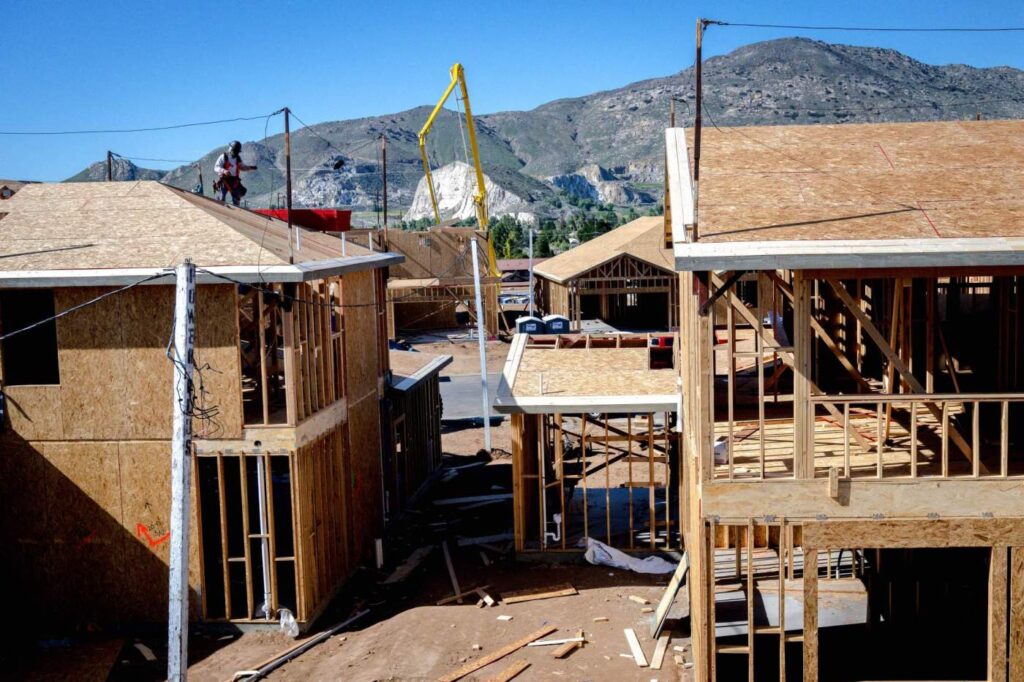
Those of a certain age might remember Mad magazine, a comic book that lampooned almost everything for more than six decades.
One of Mad’s more enduring and popular strips was “Spy vs. Spy,” created by Cuban expatriate artist Antonio Prohías. Wordlessly, two figures, one dressed in black and the other in white, would try constantly to outwit each other but neither could ever prevail.
The political and legal war over housing, pitting the state of California against its 400 cities, is reminiscent of the perpetual duel between those two comic strip warriors.
The state enacts laws and regulations aimed at compelling cities to accept more affordable housing construction, particularly to serve low- and moderate-income families, and cities counter with local laws and regulations to evade their housing quotas.
Although the state might seem to have the upper hand as it seeks to close its yawning gap between supply and demand, one would have to say that the cities have been remarkably successful in evading their civic and legal responsibilities because construction falls way short of the state’s goals.
In theory, California should be building 185,000 units a year to keep up with current demand and chip away at the backlog, but it scarcely produces half of that number.
City officials, responding to their constituents’ aversion to high-density housing, employ all sorts of tactics to discourage development, such as imposing specific requirements that make projects economically infeasible or zoning undesirable land for housing.
As new anti-housing tactics are introduced, the state adjusts laws and regulations to thwart them, but the cities just find new ways to preserve the status quo.
One of the state’s newest pro-housing approaches, embodied in legislation enacted last year and going into effect last month, allows up to four units of housing to be built on land zoned for single-family homes. City officials denounced Senate Bill 9 as it was winding through the Capitol, arguing that it usurped their traditional land use authority and would change the character of their neighborhoods.
However, now that SB 9 is law, cities are trying to figure out how to blunt, or even cancel, its impact in true Spy vs. Spy fashion.
Just before the law took effect, for example, Pasadena enacted an “emergency ordinance” that imposes tight, and likely unworkable, rules on what can be built.
They include an 800-square-foot limit on new units, a one-story height limitation, a requirement for one parking spot for each new unit, landscaping standards and a ban on short-term rentals. Collectively, they could make development authorized under SB 9 economically prohibitive.
Woodside, a very wealthy enclave on the San Francisco Peninsula, takes the prize for the most creative way to thwart SB 9 — supporting a petition to have mountain lions declared a threatened species and declaring the entire town to be mountain lion habitat and therefore unsuitable for housing.
Related Articles
Joe Rogan shouldn’t be silenced
Something is not better than nothing when it comes to pre-K
California is the mad scientist of bad policy
L.A. Rams are a big deal: Letters
With single-payer flop, California’s progressives lose again
“Given that Woodside — in its entirety — is habitat for a candidate species, no parcel within Woodside is currently eligible for an SB 9 project,” a city memo declares.
The action has earned Woodside scorn from pro-housing advocates.
“This is so absurd,” said Laura Foote, executive director of YIMBY Action, a or-housing group, told the San Francisco Chronicle. “It is an example of the extreme absurd lengths cities will come up with to evade state law.”
“You can build a McMansion and that somehow won’t hurt the mountain lion,” Foote added. “But if you build two units the lions will somehow fall over and die.”
That’s well said about the obvious hypocrisy of Woodside’s move.
CalMatters is a public interest journalism venture committed to explaining how California’s state Capitol works and why it matters. For more stories by Dan Walters, go to calmatters.org/commentary.
